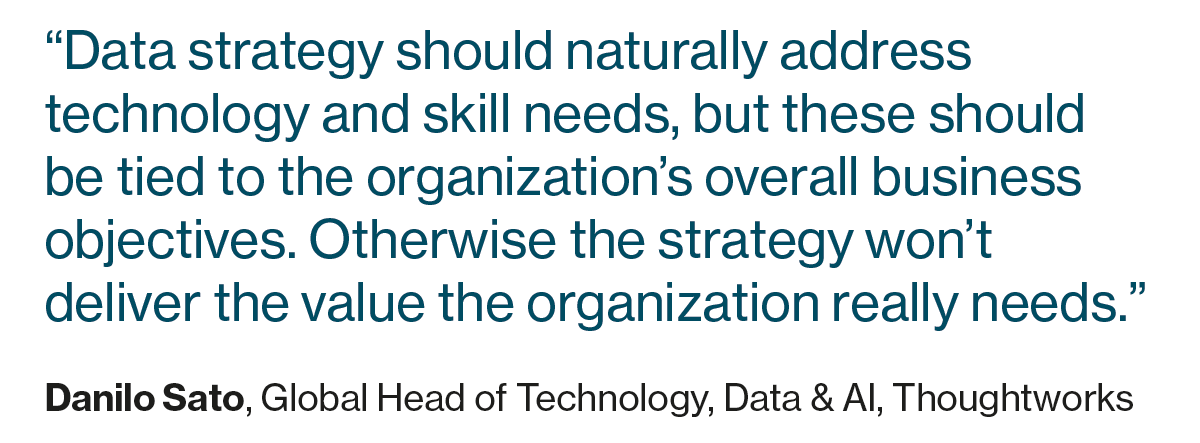Technology & Innovation
5 loopholes COP26 leaves for the fossil fuel industry

For the Glasgow climate summit to be judged a success, a key outcome had to be that parties agree the majority of the world’s fossil fuel reserves need to be left in the ground.
As recent research suggests, 89% of coal and 59% of gas reserves need to stay in the ground if there’s to be even a 50% chance of global temperature rise staying under the crucial limit of 1.5℃ this century.
The summit, COP26, has not lived up to that ambition because there are too many loopholes for the fossil fuel industry to exploit.
Some promising proposals have been put forward, including the pledge to cut methane emissions, some increased emissions reductions targets at the national level, limits to deforestation, and ending some overseas funding of fossil fuels. On Thursday, 13 countries launched a new alliance to end gas and oil production within their borders, led by Denmark and Costa Rica.
But most proposals suffer either from a lack of ambition or a lack of participation from key countries.
Take the pledge to cut methane emissions. Some of the biggest methane emitters such as Russia, China and Australia failed to sign up. Similarly, the plan to phase out coal allows some signatories such as Indonesia to keep building coal-fired power plants.
What these proposals and, indeed, the whole COP process, suffer from is an inability to address the fact that if we’re to avoid the worst of climate change, we simply can’t keep extracting fossil fuels.
While national governments and their negotiators remain willing to listen to the interests of fossil fuel lobbyists, the COP process will continue to be riddled with loopholes that will derail the achievement of real targets. Five big loopholes come to mind.
1. Subsidies and finance
Much has been made of the Glasgow Financial Alliance for Net Zero (GFANZ), a global coalition of financial institutions which aims to accelerate the decarbonization of the economy.
But many of its efforts will be undermined while governments continue to subsidize the fossil fuel industry. With fossil fuel subsidies globally running at US$11 million (A$15 million) every minute, GFANZ is insufficient to halt emissions because subsidizing the cost of production and sale of fossil fuels continues to make the industry feasible.
Moreover GFANZ is voluntary, when we need commitments to be binding. It also includes banks who have recently provided US$575 billion (A$787 billion) in fossil fuel finance to some of the world’s biggest polluters.
Governments should not wait for future COPs to address this issue. Countries such as Australia should immediately start reining in the subsidies that make the industry profitable and should not entertain new subsidies, such as the National Party’s proposal in Australia for a coal rail line to Gladstone.
2. New production
Despite the overwhelming evidence that most of the world’s fossil fuel reserves must stay in the ground, governments are still approving new projects. The UK government has 40 fossil fuel projects in the pipeline despite being host of COP26.
Australia, too, continues to approve new gas and coal developments. The NSW government has approved eight new projects since 2018, despite the state’s target of 50% emissions reduction by 2030.
Until future climate negotiations put a ban on new fossil fuel projects and agree to a clear and rapid phase out of current production levels, the fossil fuel industry will continue to thrive.
3. Business as usual
A further loophole for the fossil fuel industry is how it’s being allowed to continue its huge levels of production because it has committed (in some cases) to making its operations greener.
Measures such as carbon capture and storage and offsetting have been touted by some governments as solutions to bringing the industry’s emissions down. But these are not real solutions if they simply allow fossil fuel production and use to continue at dangerous levels.
While offsetting will have to play a role in reducing emissions in some hard-to-abate sectors such as aviation and agriculture, it is not a substitute for genuine cuts to fossil fuel use and misleadingly gives the impression fossil fuel companies are going green.
4. Influence
These loopholes that allow fossil fuel production are, of course, no accident. The largest group of representatives at COP26 were from the fossil fuel industry.
One of the striking and disturbing characteristics of government approaches to climate change is the impact of fossil fuel companies on decision making. It’s hard to think of other issues (smoking, peace negotiations) where we tolerate this kind of influence.
The industry’s influence on successive Australian governments has been well documented, with over A$136.8 million in donations recorded between 1999 and 2019.
Having a display by gas company Santos (a major donor to Australian political parties) at Australia’s COP26 pavilion rightly provoked ridicule.
5. Decoupling production
The failure to address these loopholes will mean the production of fossil fuels in countries like Australia will continue for much longer than it should.
The fact there are still willing buyers for fossil fuel assets such as BHP’s Queensland coal mines indicates investors are anticipating years of profits (and few climate liabilities) from fossil fuels, despite the measures proposed at COP26.
One of the most glaring failures of COP26 is the failure to connect emission cuts with production cuts. Nowhere is this more apparent than in countries such as Norway which have impressive domestic reduction targets (55% by 2030) yet continue to champion fossil fuel production through oil and gas exploration.
A key to progress at future COPs and domestically is ending the false idea one can make progress on climate by cutting domestic emissions while simultaneously supporting fossil fuel production. If countries such as Australia and Norway can’t come together to agree on cutting support for production, then we will continue to see loopholes that allow the industry to flourish.
Some countries are taking positive steps. The Beyond Oil and Gas Alliance that aims to phase out production is key to cutting supply of fossil fuels.
Multilateral action such as this, whether as part of COP or outside it—and, crucially, the pressure from below that causes it—must be a focus if we’re to avoid climate change.
Technology & Innovation
Modernizing data with strategic purpose

This report seeks to understand organizations’ objectives for their data modernization projects and how they are implementing such initiatives. To do so, it surveyed senior data and technology executives across industries. The research finds that many have made substantial progress and investment in data modernization. Alignment on data strategy and the goals of modernization appear to be far from complete in many organizations, however, leaving a disconnect between data and technology teams and the rest of the business. Data and technology executives and their teams can still do more to understand their colleagues’ data needs and actively seek their input on how to meet them.
Following are the study’s key findings:
AI isn’t the only reason companies are modernizing the data estate. Better decision-making is the primary aim of data modernization, with nearly half (46%) of executives citing this among their three top drivers. Support for AI models (40%) and for decarbonization (38%) are also major drivers of modernization, as are improving regulatory compliance (33%) and boosting operational efficiency (32%).
Data strategy is too often siloed from business strategy. Nearly all surveyed organizations recognize the importance of taking a strategic approach to data. Only 22% say they lack a fully developed data strategy. When asked if their data strategy is completely aligned with key business objectives, however, only 39% agree. Data teams can also do more to bring other business units and functions into strategy discussions: 42% of respondents say their data strategy was developed exclusively by the data or technology team.
Data strategy paves the road to modernization. It is probably no coincidence that most organizations (71%) that have embarked on data modernization in the past two years have had a data strategy in place for longer than that. Modernization goals require buy-in from the business, and implementation decisions need strategic guidance, lest they lead to added complexity or duplication.
Top data pain points are data quality and timeliness. Executives point to substandard data (cited by 41%) and untimely delivery (33%) as the facets of their data operations most in need of improvement. Incomplete or inaccurate data leads enterprise users to question data trustworthiness. This helps explain why the most common modernization measure taken by our respondents’ organizations in the past two years has been to review and upgrade data governance (cited by 45%).
Cross-functional teams and DataOps are key levers to improve data quality. Modern data engineering practices are taking root in many businesses. Nearly half of organizations (48%) are empowering cross-functional data teams to enforce data quality standards, and 47% are prioritizing implementing DataOps (cited by 47%). These sorts of practices, which echo the agile methodologies and product thinking that have become standard in software engineering, are only starting to make their way into the data realm.
Compliance and security considerations often hinder modernization. Compliance and security concerns are major impediments to modernization, each cited by 44% of the respondents. Regulatory compliance is mentioned particularly frequently by those working in energy, public sector, transport, and financial services organizations. High costs are another oft-cited hurdle (40%), especially among the survey’s smaller organizations.
This content was produced by Insights, the custom content arm of MIT technology Review. It was not written by MIT technology Review’s editorial staff.
Technology & Innovation
Is robotics about to have its own ChatGPT moment?

Stretch weighs about 50 pounds. It has a small mobile base, a stick with a camera dangling off it, and an adjustable arm featuring a gripper with suction cups at the ends. It can be controlled with a console controller. Henry controls Stretch using a laptop, with a tool that that tracks his head movements to move a cursor around. He is able to move his thumb and index finger enough to click a computer mouse. Last summer, Stretch was with the couple for more than a month, and Henry says it gave him a whole new level of autonomy. “It was practical, and I could see using it every day,” he says.
PETER ADAMS
Using his laptop, he could get the robot to brush his hair and have it hold fruit kebabs for him to snack on. It also opened up Henry’s relationship with his granddaughter Teddie. Before, they barely interacted. “She didn’t hug him at all goodbye. Nothing like that,” Jane says. But “Papa Wheelie” and Teddie used Stretch to play, engaging in relay races, bowling, and magnetic fishing.
Stretch doesn’t have much in the way of smarts: it comes with some preinstalled software, such as the web interface that Henry uses to control it, and other capabilities such as AI-enabled navigation. The main benefit of Stretch is that people can plug in their own AI models and use them to do experiments. But it offers a glimpse of what a world with useful home robots could look like. Robots that can do many of the things humans do in the home—tasks such as folding laundry, cooking meals, and cleaning—have been a dream of robotics research since the inception of the field in the 1950s. For a long time, it’s been just that: “Robotics is full of dreamers,” says Kemp.
But the field is at an inflection point, says Ken Goldberg, a robotics professor at the University of California, Berkeley. Previous efforts to build a useful home robot, he says, have emphatically failed to meet the expectations set by popular culture—think the robotic maid from The Jetsons. Now things are very different. Thanks to cheap hardware like Stretch, along with efforts to collect and share data and advances in generative AI, robots are getting more competent and helpful faster than ever before. “We’re at a point where we’re very close to getting capability that is really going to be useful,” Goldberg says.
Folding laundry, cooking shrimp, wiping surfaces, unloading shopping baskets—today’s AI-powered robots are learning to do tasks that for their predecessors would have been extremely difficult.
Missing pieces
There’s a well-known observation among roboticists: What is hard for humans is easy for machines, and what is easy for humans is hard for machines. Called Moravec’s paradox, it was first articulated in the 1980s by Hans Moravec, thena roboticist at the Robotics Institute of Carnegie Mellon University. A robot can play chess or hold an object still for hours on end with no problem. Tying a shoelace, catching a ball, or having a conversation is another matter.
There are three reasons for this, says Goldberg. First, robots lack precise control and coordination. Second, their understanding of the surrounding world is limited because they are reliant on cameras and sensors to perceive it. Third, they lack an innate sense of practical physics.
“Pick up a hammer, and it will probably fall out of your gripper, unless you grab it near the heavy part. But you don’t know that if you just look at it, unless you know how hammers work,” Goldberg says.
Technology & Innovation
The Download: AI is making robots more helpful, and the problem with cleaning up pollution

November 2023
Technically speaking, neuroscientists have been able to read your mind for decades. It’s not easy, mind you. First, you must lie motionless within a hulking fMRI scanner, perhaps for hours, while you watch films or listen to audiobooks.
None of this, of course, can be done without your consent; for the foreseeable future, your thoughts will remain your own, if you so choose. But if you do elect to endure claustrophobic hours in the scanner, the software will learn to generate a bespoke reconstruction of what you were seeing or listening to, just by analyzing how blood moves through your brain.
More recently, researchers have deployed generative AI tools, like Stable Diffusion and GPT, to create far more realistic, if not entirely accurate, reconstructions of films and podcasts based on neural activity.
But as exciting as the idea of extracting a movie from someone’s brain activity may be, it is a highly limited form of “mind reading.” To really experience the world through your eyes, scientists would have to be able to infer not just what film you are watching but also what you think about it, and how it makes you feel. And these interior thoughts and feelings are far more difficult to access. Read the full story.
—Grace Huckins
We can still have nice things
A place for comfort, fun and distraction to brighten up your day. (Got any ideas? Drop me a line or tweet ’em at me.)
+ Intrepid archaeologists have uncovered beautiful new frescos in the ruins of Pompeii.
+ This doughy jellyfish sure looks tasty.
+ A short rumination on literary muses, from Zelda Fitzgerald to Neal Cassady.
+ Grammar rules are made to be broken.
-

 Technology & Innovation2 years ago
Technology & Innovation2 years agoHow to get people to help you
-

 Technology & Innovation2 years ago
Technology & Innovation2 years agoWhy are scams getting worse?
-

 Sales & Marketing2 years ago
Sales & Marketing2 years agoVodafone invites Snapchatters to connect with Emma Raducanu virtually
-

 Cryptocurrency2 years ago
Cryptocurrency2 years agoBitcoin price targets 8-week highs as Ethereum reaches $1.8K
-

 Cryptocurrency2 years ago
Cryptocurrency2 years agoAre there too many cryptocurrencies?
-

 Technology & Innovation2 years ago
Technology & Innovation2 years agoHow Log4Shell threatens the Internet
-

 Business & Finance2 years ago
Business & Finance2 years agoHere’s How Apple CEO Earned 500% More In 2021
-

 Business & Finance2 years ago
Business & Finance2 years agoUN Announces Talks To Help Resolve Sudan’s Political Crisis



